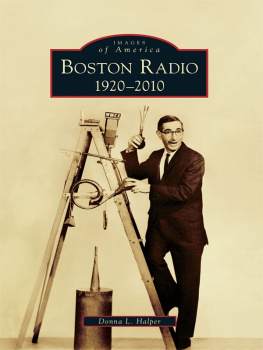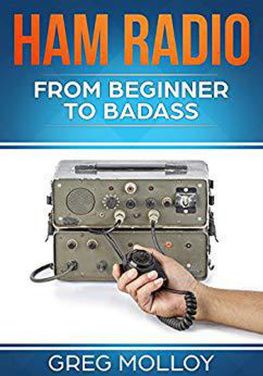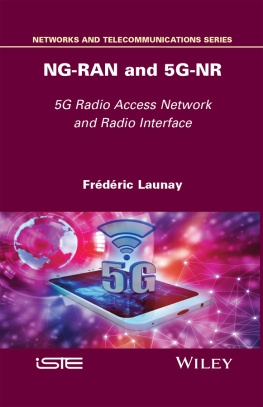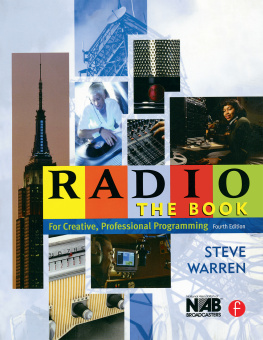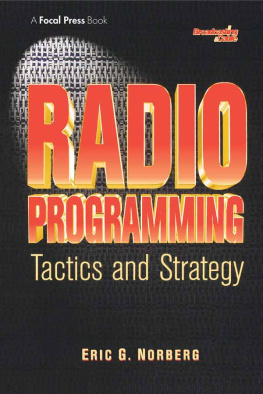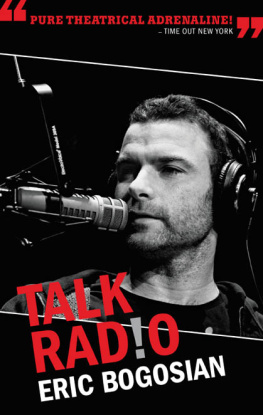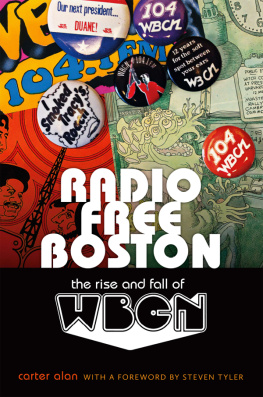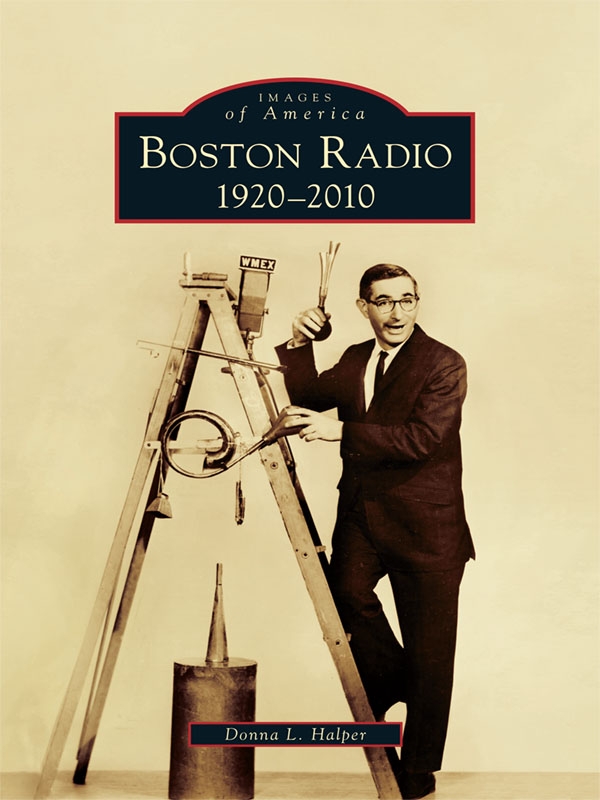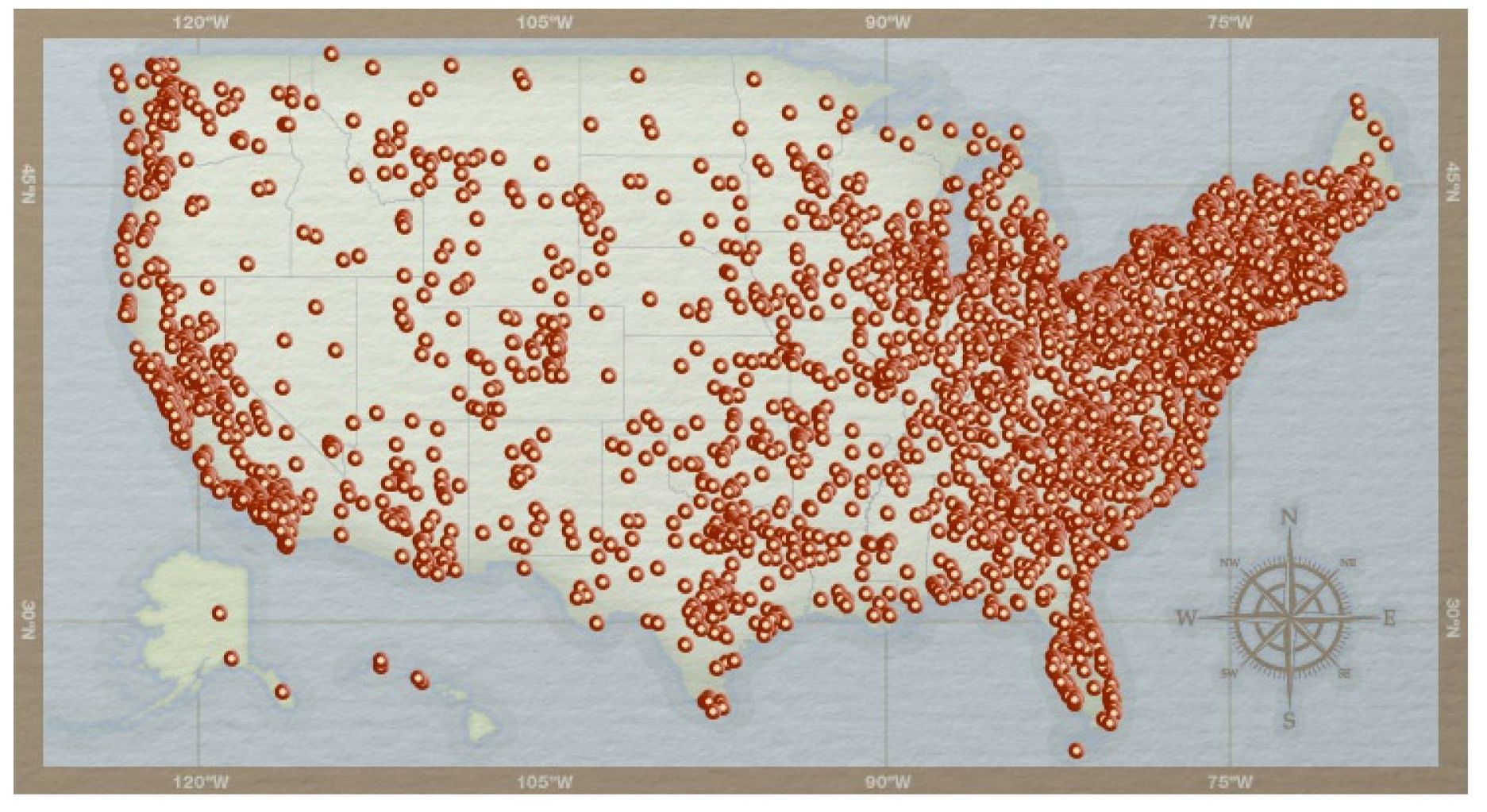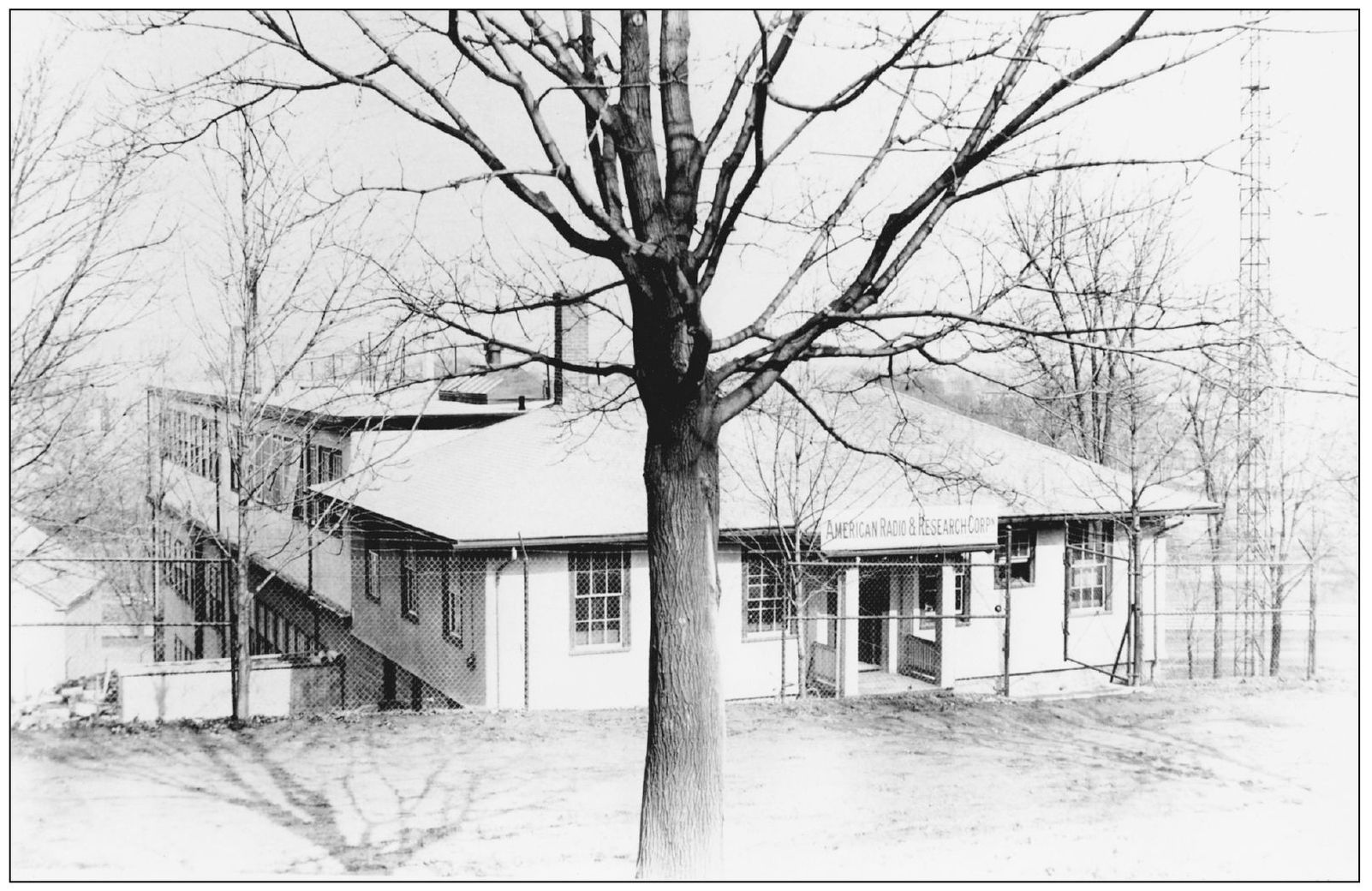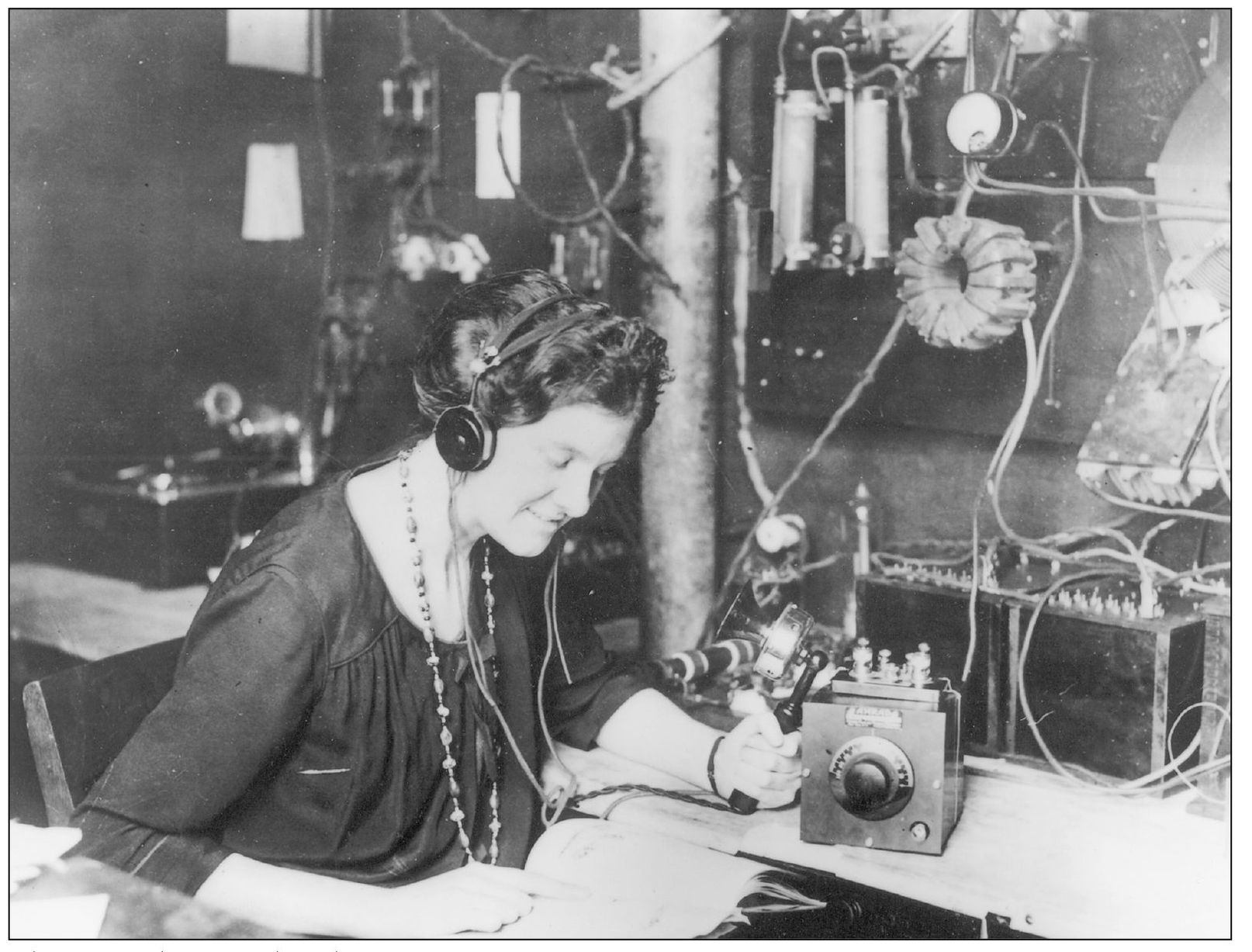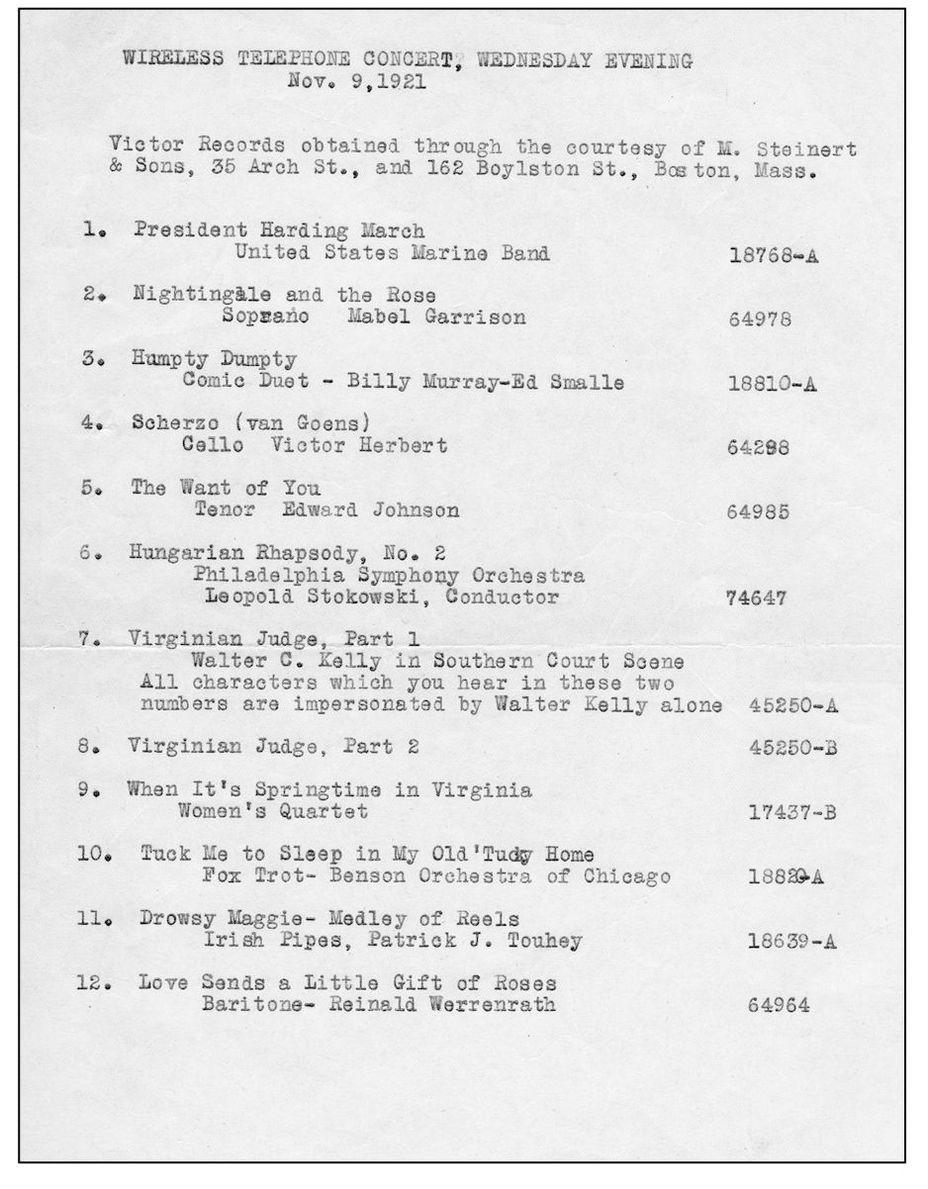ACKNOWLEDGMENTS
Many people contributed to making this book a reality. I would like to first thank Aaron Schmidt of the Boston Public Library for going above and beyond for me many times. I would also like to thank the promotion directors and general managers of current Boston radio stations, including WBUR, WEEI, WGBH, WKLB, WMJX, WODS, WRKO, WROR, WTKK, and WXKS-FM, for their cooperation; and a special thank-you to Peter Casey and Nick Darling of WBZ for all their assistance. Thanks to Cha-Chi Loprete for the WZLX and WBCN photographs and to Joe Mazzei for the Sunny Joe White photographs. Among the others who offered advice and/or donated photographs were Bob Bittner, Steve Elman, John H. Garabedian, Ken Johnson, Sam Kopper, Dave Kruh, Maurice Lewis, Duncan MacDonald, Joe Martelle, Fred McLennan, Jimmy Myers, Harry Nelson, Candy OTerry, Norm Thibeault, and J. J. Wright.
Among the family members who helped me are Eunice Stolecki, who provided photographs of AMRAD/WGI and of her late aunt Eunice Randall; Helen Miller, who provided photographs of her late husband, Mel Miller, as well as Ed Hider of the old WMEX; and Bev Kennedy, who provided photographs of her late husband, Bob Kennedy of WBZ. I am indebted to Bryan Benilous at Proquest Historical Databases and Brett Kolcun of Newsbank/Readex; each provided access to numerous historical newspapers and made my research easier to do. Bequaert Old Books was an excellent resource for magazines from the 1920s and 1930s. Thanks also to Henry Scannell and the staff of the Boston Public Librarys microfilm room, as well as the reference librarians at the Thomas Crane Public Library in Quincy. I am eternally grateful to my husband, Jon Jacobik, who scanned many of the photographs for me and provided ongoing encouragement. And finally, I want to thank my editor at Arcadia, Erin Rocha, for believing in this project and helping to move it forward.
A BRIEF BOSTON RADIO RETROSPECTIVE
May 20, 1921: Greater Bostons first station, 1XE (later WGI) begins a daily schedule.
September 19, 1921: WBZ, then in Springfield, first station to receive a commercial license, begins broadcasting. (Its Boston studio, WBZA, opens late February 1924.)
July 31, 1922: WNAC (today WRKO) in Boston debuts from the Shepard Department Store.
September 29, 1924: WEEI, owned by the Edison Electric Illuminating Company, goes on the air.
June 20, 1929: WHDH debuts in Gloucester; it will open a Boston studio in November 1930.
October 18, 1934: WMEX goes on the air. (In the late 1950s, it becomes an important Top 40 station.)
July 24, 1939: W1XOJ is Greater Bostons first FM station.
December 18, 1940: W1XOJ is linked with a New Hampshire station, W1XER, to create the first FM network.
November 14, 1949: WERS at Emerson College is Bostons first noncommercial FM station.
September 5, 1957: The former WBMS becomes WILD Radio; it will become Bostons first black music station.
March 13, 1967: The former WNAC becomes WRKO, a Top 40 station.
March 15, 1968: WBCN-FM, a classical music station, begins playing rock music late at night. It will soon become an album-rocker (playing album tracks rather than Top 40 singles).
October 29, 1985: WZLX-FM, a classic rock station, makes its debut.
September 3, 1991: WEEI switches to a sports talk format.
September 19, 1996: WBZ Radio celebrates its 75th anniversary.
Find more books like this at
www.imagesofamerica.com
Search for your hometown history, your old
stomping grounds, and even your favorite sports team.
One
THE FORMATIVE YEARS
Greater Boston radio grew quickly during the 1920s, as a number of new stations went on the air. Some were short-lived like WAAJ and WFAU, both of which debuted in mid-1922, and neither of which lasted a year. Others, like WEEI, WBZ, and WNAC, quickly proved they were here to stay. Some were low-powered like WAGS in Somerville, which went on the air in 1926 with 5 watts. Others were high-powered like WBZ, which had 5,000 watts the same year. Some stations were owned by churches, like the Tremont Temple Baptist Churchs WSSH with its Strangers Sabbath Home program, and some by newspapers, like the Boston Evening Transcript s WBET. Some, like WSSH and WBET, had requested call letters. Others just took the ones they were assigned (it is a myth that Gloucesters WHDH stood for We haul dead haddock). Some, like WBZA, had beautiful studios in a hotel, while others, like WBBG in Mattapoisett or WLEX in Lexington, debuted from their owners home.
Some stations, like WEEI and WNAC, had few problems winning a large audience. Others, like WBET, struggled with persistent technical failures and never earned the publics trust. WBET debuted with much fanfare in late 1927, but its owners gave up and sold it by early 1929. There were also stations that tried to serve their community but were removed from the air by the new Federal Radio Commission (FRC). In 1928, the FRC decided the airwaves were too crowded and deleted more than 100 small stations, including Quincys first, WRES, in Wollaston.
It was in the 1920s that a number of local performers first gained popularity. Among them were Charles L. H. Wagner (the Radio Poet) and local bands like Bernie and His Bunch and Ted and His Gang. Even announcers now had fansWBZs John Shaw Young was so popular that he was wooed away by the new National Broadcasting Company.
Greater Bostons first radio station was the AMRAD station, 1XE (later known as WGI), with studios on the campus of Tufts College at Medford Hillside. In the early 1920s, 1XEs announcers and engineers spent their days working in the AMRAD factory designing and building radio equipment. Then, in the evening (most broadcasts at that time were only at night), various members of the staff took their turns broadcasting. 1XEs slogan was AMRAD: The voice of the air. These photographs, taken in 1921, show two exterior views of the AMRAD plant. (Both, courtesy of Eunice Stolecki.)
This 1921 photograph, taken in the AMRAD studio, shows Eunice Randall (later Eunice Randall Thompson), Bostons first female announcer. A talented broadcaster, she read bedtime stories to children, announced the musical selections, and read the news. (Courtesy of Eunice Stolecki.)
Here is a rare 1921 playlist from 1XE. While most radio stations offered live music, sometimes phonograph records were played. The records were often obtained by barter; a local record shop would provide them in exchange for an on-air mention during the broadcast. (Courtesy of Eunice Stolecki.)

